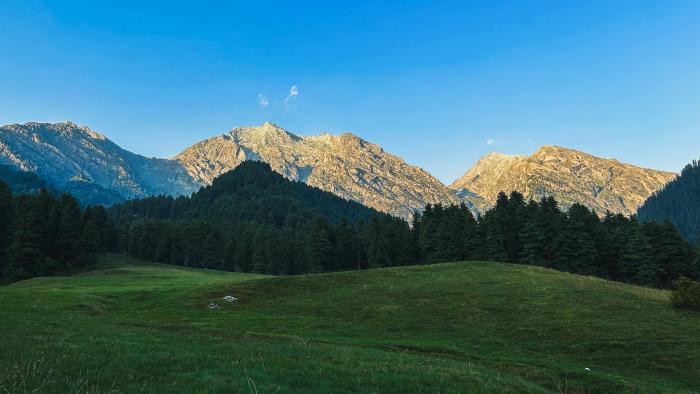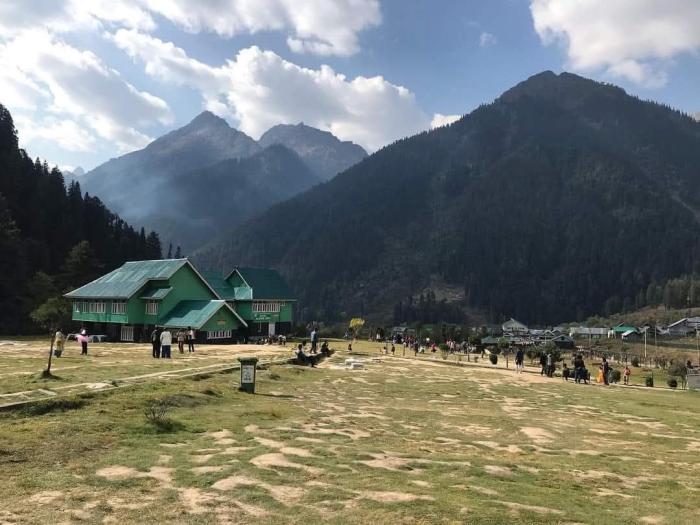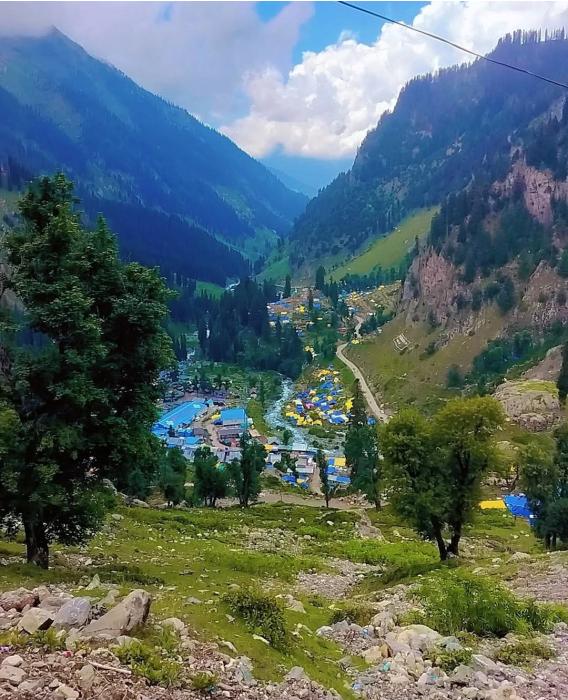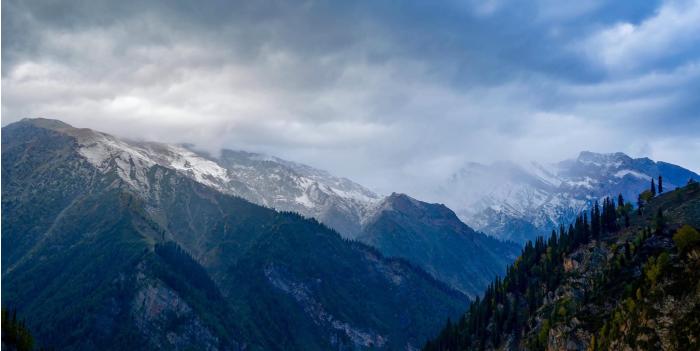
A Personal Reflection on the Pahalgam Attack
There are places that live in our imagination long before we ever step foot on their soil. Pahalgam was one of those places for me — etched in memory through family albums, Kashmiri postcards and tales of pristine valleys where shepherds still sang to the sky. I had always associated it with the scent of pine, the glacial breath of the Lidder River and the surreal green of the Baisaran meadows. A name that felt like lullaby.
But since April 22, 2025, the name Pahalgam carries a different kind of resonance — a deep, gutting ache. That morning, in the Baisaran meadows, a group of tourists was ambushed by armed militants. They were not caught in crossfire. They were asked who they were and, depending on their answers, they lived — or died. The attack was calculated, intentional and marked by a cruel selectivity. Dozens died. Many more were injured, scarred and haunted.
I was not there when it happened. I was safe, miles away, seated in a conference room at my university, preparing to deliver a lecture on the intersections of postcolonial identity and landscape. The irony still stings.
But that day altered something in me. I could not sleep for nights. The horror was not just the attack — it was the eerie silence that followed. News cycles moved on. But the meadows — they must still be grieving. The trees must still remember.

The Baisaran Valley, famous for its lush green meadows and pine forests.
It was quite a few days after the attack that I managed to speak with Professor Debasish Bhattacharjee from Assam University, someone I had long admired for his work in cultural and postcolonial studies. He had been in Pahalgam that day with his wife and young son.
“I didn’t think we would make it,” he said softly over the phone. His voice was tremulous, heavy. “I had taken my son there to show him the Himalayan spring — the blossoms, the grazing ponies, the blue mist of morning. I wanted him to remember beauty. Instead…”
He trailed off, and then continued, almost in disbelief, “They asked us if we were Muslim. We weren’t. But I heard others around me whispering the Kalma*. I remembered the words — I’ve read the Quran in translation, taught comparative religion. So, I said it too. ‘La ilaha illallah…’ I kept repeating it. My wife hid her mangalsutra**, wiped her sindoor***.”
He paused. “That Kalma — those words — saved us. Isn’t it strange? The sacred being twisted into a password for survival.”
His voice stayed with me for days.
In India, violence often follows a pattern: it flares, then disappears beneath the weight of politics and collective amnesia. But nature never forgets. I keep thinking about the Baisaran meadows. How long before grass grows over the blood? Before birds return to sing? Before ponies feel safe again?
What does trauma do to an ecosystem — not just in theory, but in texture? In Kashmir, land and culture are deeply intertwined; when one bleeds, the other bruises. After the attack, pilgrims and tourists abandoned the area, breaking ancient seasonal rhythms of human-nature interaction. With fewer feet on forest trails, medicinal herbs like kuth and nag chhatri (Himalayan trillium) — usually carefully foraged by local women — are untended. Sacred groves, once murmuring with ritual, have grown quiet and overgrown. The absence of community rituals — tea shared by campfires, songs echoing in pine-shadowed dusk — has fractured the cultural ecology. And in this rupture, grief doesn't just settle in memory. It settles in the moss, dust and stream beds.

The path to Amarnath Cave, a sacred Hindu pilgrimage site.
Tourism in Baisaran has come to a near standstill since the attack. With the absence of humans, the equilibrium hasn't reset — it has frayed. Ponies once accustomed to carrying families up the green trails now stand tethered and restless, their routines disrupted. The wild goats that grazed freely along the ridge paths have grown jittery, more skittish than usual. There are fewer shepherds singing across the slopes, fewer tea stalls boiling cardamom over charcoal — sensory absences that ripple through the ecology like a pulled thread unraveling fabric. Locals say that even migratory birds seemed to bypass the meadows this spring. The silence that remains is not just grief — it is ecological dissonance.
As someone from academia, I often struggle with the tension between critical distance and emotional proximity. But some events tear through that barrier. This one did. Not because I was physically close, but because the act — the deliberate targeting of civilians based on religion, in a place of natural sanctity — felt like a spiritual wound.
In Kashmiri, Pahalgam means “the village of shepherds.” Shepherds are caretakers, the guardians of flocks and the humble stewards of land. The attack, at its core, violated not just human lives but the very essence of care. It was an act against everything that word implies: trust, safety, coexistence.
In Kashmiri oral traditions, the meadows of Baisaran are said to be inhabited by spirits — benevolent beings who guide lost travelers and protect the forest paths. I wonder where those spirits were that day. Or perhaps they, too, were rendered helpless.
The Western world often struggles to comprehend the layered traumas of regions like Kashmir. The binaries fail: it is neither just a tourist destination nor merely a site of political conflict. It is a living, breathing, hurting ecosystem — human and more-than-human.

Aru Valley, the starting point for treks to Kolahoi Glacier.
What does biodiversity mean in such places? Not just of flora and fauna, but cultural diversity, linguistic plurality and religious coexistence. These are all forms of biodiversity. And when violence like this happens, the loss is multidimensional. The silence that follows is not just due to fear — it’s an ecological muting.
There’s a term in ecological philosophy — “solastalgia.” It refers to the distress produced by environmental change, especially when your home or place of belonging undergoes a transformation you cannot control. I believe Kashmiris — and those of us who carry Kashmir in our imaginations — are suffering from solastalgia today. But not from slow degradation. From an acute, brutal rupture.
Weeks after the attack, I walked through the East Kolkata Wetlands one morning — a ritual I often follow when I feel emotionally unmoored. I watched egrets lifting off in the golden light, fishermen casting their nets, dragonflies humming in their chaos. And yet, even there, over a thousand miles from the Baisaran Valley, I could feel the dissonance.
I kept thinking: If a meadow can bleed, can a wetland mourn? If a pony rears in terror, does it remember?
In our anthropocentric arrogance, we assume nature heals itself. But what if healing, too, requires acknowledgment?

The Lidder Valley stretches through Pahalgam and nearby villages.
There’s another image I can’t shake. A Kashmiri boy — around twelve — was seen the next day near the site of the attack, quietly collecting wildflowers. “To cover the bad smell,” he reportedly said to a journalist. “It helps.”
That image is enough to undo me. A child trying to mask the scent of death with petals.
Perhaps this, too, is part of biodiversity — grief rituals. Memory practices. Silent offerings.
I am writing this not to politicize, but to humanize. And to ask readers, especially those far from this land: what happens to nature when humans bring hatred into the heart of it? What happens to the stories of the trees, rivers and animals that witness our worst selves?
And the question that lingers is, how do we re-enter these spaces — mentally, ethically, spiritually — after they’ve been violated?
In Indigenous epistemologies around the world — including Kashmir’s own oral cosmologies — land is not passive: it witnesses, absorbs and remembers. In Gujjar-Bakarwal folklore, the meadows of Baisaran are said to host mountain spirits who guard humans and animals alike. What happens when such a place becomes a site of massacre? Do these spirits withdraw? Do they mourn? Cultural ecology tells us that when violence disturbs a sacred landscape, it severs more than soil — it disrupts the spiritual alliances between people and place. Reconciliation, then, cannot come solely through political gestures. It must include offerings to the land — rituals, storytelling, replanting native flora, walking gently where blood once spilled.
Pahalgam doesn’t just need police patrols now. It needs mourning songs. It needs tree-planting rituals. It needs tourists to return, but gently — aware of the trauma etched in those trails. It needs scholars and poets and shepherds to tell new stories.
Before ending our phone call, Professor Bhattacharjee said something that still echoes in me.
“I had gone there to teach my son about beauty,” he said. “Instead, I taught him about fear. But maybe someday, he’ll return there and teach his own child how to listen to birdsong again.”
That, I believe, is where our hope lies. In return. In listening. In remembering. And in refusing to let violence define the soul of a place.

Caption: Kolahoi Peak, known as the “Matterhorn of Kashmir”
Author’s note: This piece is dedicated to all the lives lost in the Pahalgam attack, human and more-than-human. May memory be a meadow we walk with care.
*The Muslim profession of faith, which begins with “There is no God but God…” “Allah” is not a different God, but the Arabic word for the one universal God and is also used by Arabic-speaking Christians and Jews.
**A sacred necklace, typically made of black and gold beads, worn by Hindu women as a symbol of marriage, much like a wedding ring in Western cultures.
***A red vermilion powder traditionally applied along the parting of a married Hindu woman’s hair, symbolizing her marital status.
All photos by Amit Kumar
For a neutral source of information and background on the Baisaran attack in Pahalgam, we suggest this link on Wikipedia: https://en.wikipedia.org/wiki/2025_Pahalgam_attack.